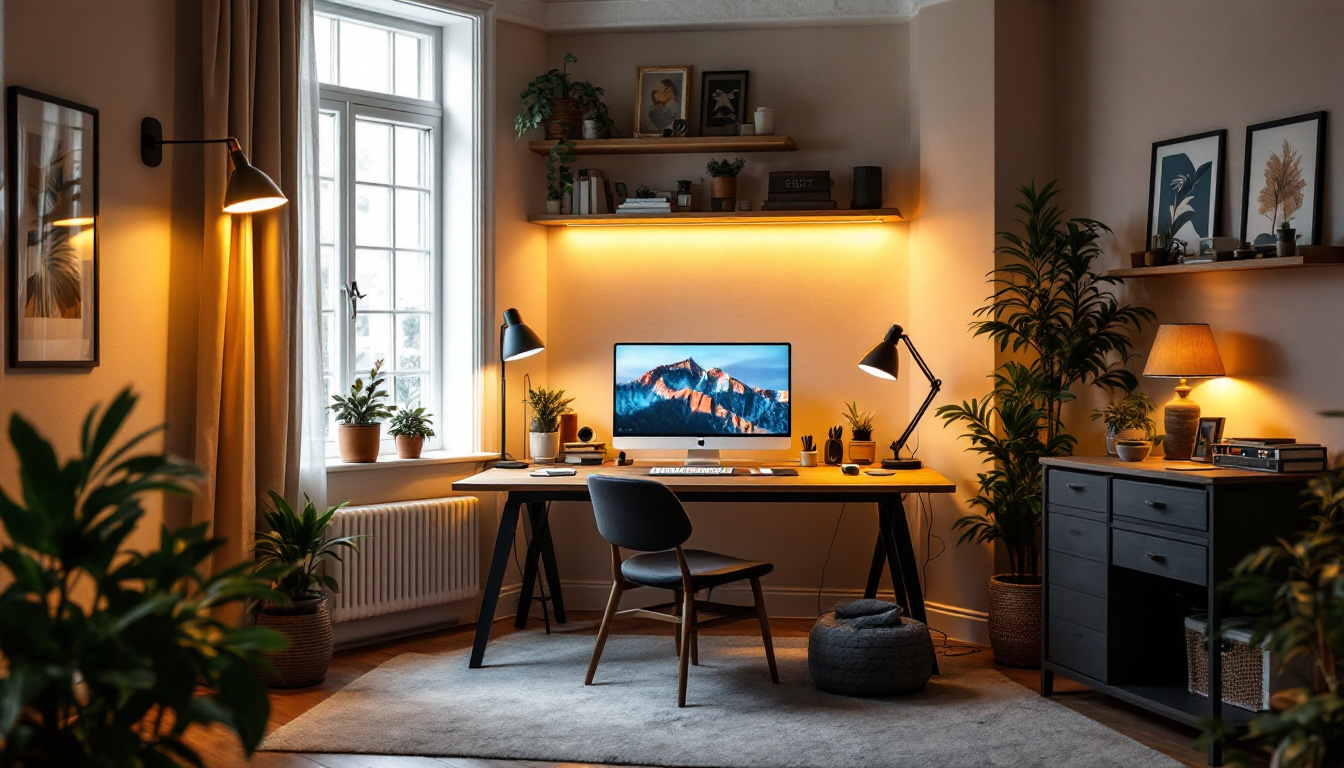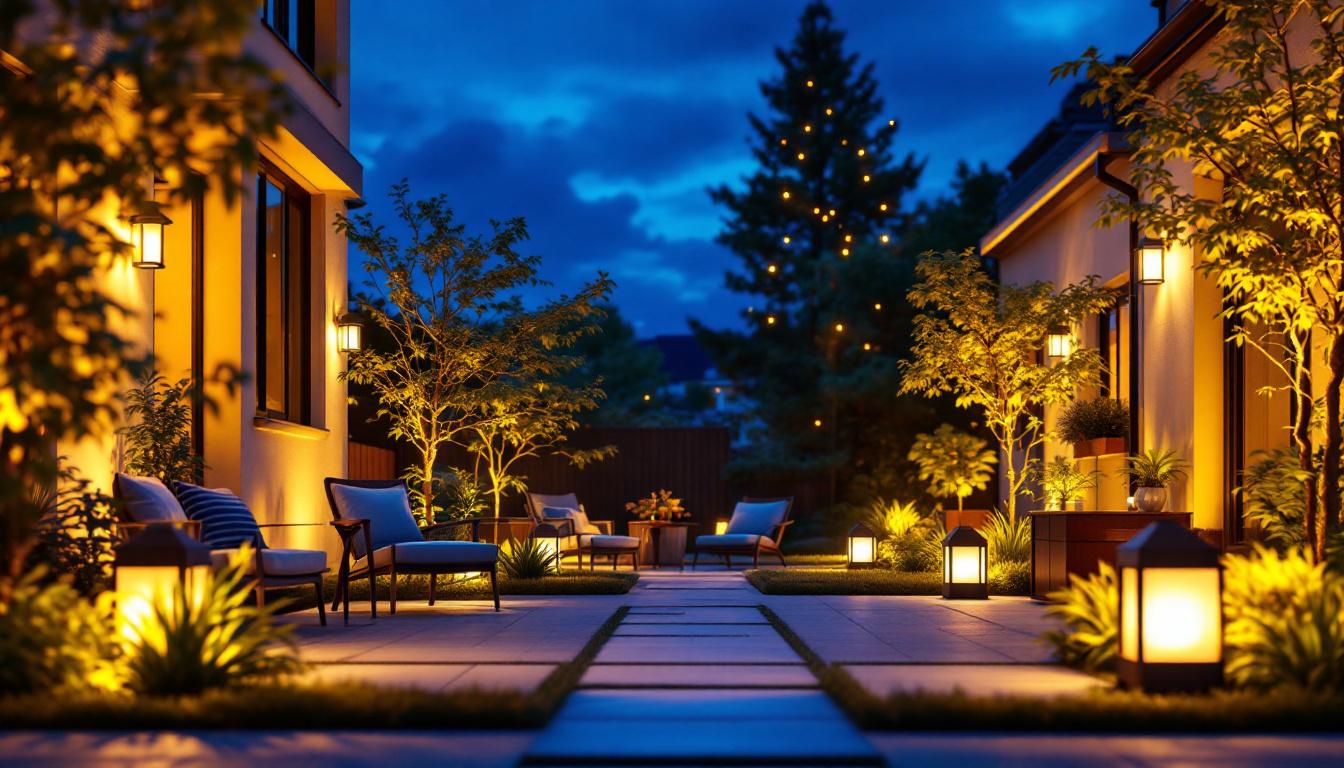
As the trend of remote work continues to rise, the importance of a well-lit home office cannot be overstated. For lighting contractors, understanding the nuances of lighting design in a home office setting is essential. This article explores the best lighting options for home offices, providing insights that will help contractors deliver optimal solutions for their clients.
Lighting plays a crucial role in enhancing productivity, reducing eye strain, and creating a comfortable working environment. The right lighting can significantly impact the mood and efficiency of individuals working from home. Therefore, it is essential for lighting contractors to grasp the various types of lighting and their effects on a workspace.
There are three primary types of lighting that should be considered when designing a home office: ambient, task, and accent lighting. Each type serves a distinct purpose and contributes to the overall functionality of the space.
Ambient lighting provides general illumination and is typically achieved through ceiling-mounted fixtures or floor lamps. Task lighting, on the other hand, is focused lighting designed to illuminate specific areas where activities such as reading, writing, or working on a computer take place. Accent lighting is used to highlight particular features within the office, such as artwork or architectural details.
Natural light is a significant factor in any home office design. It not only enhances the aesthetic appeal of a workspace but also has numerous psychological benefits. Exposure to natural light can boost mood, increase alertness, and improve overall well-being.
Lighting contractors should assess the positioning of windows and consider how to maximize natural light. This may involve selecting sheer window treatments that allow light to filter in while reducing glare on screens. Additionally, the use of mirrors can help reflect natural light, making the space feel larger and more inviting.
Moreover, the orientation of the home office in relation to the sun’s path can greatly influence the quality of natural light received throughout the day. For instance, a workspace facing south will typically receive more consistent sunlight, while a north-facing office may require additional artificial lighting to maintain brightness. Incorporating skylights or light tubes can also be an effective way to bring in more natural light, especially in spaces that may lack windows. These elements not only enhance the visual appeal but also create a more energizing atmosphere conducive to creativity and focus.
In addition to enhancing the physical environment, natural light has been shown to regulate circadian rhythms, which can lead to better sleep patterns and overall health. This is particularly important for those working from home, as the lines between work and personal time can often blur. By ensuring that the home office is well-lit with natural light during working hours, individuals may find it easier to maintain a healthy work-life balance, leading to increased satisfaction and productivity in both areas of their lives.
When selecting fixtures for a home office, lighting contractors must consider both functionality and style. The chosen fixtures should complement the overall design of the office while providing adequate illumination for various tasks. It’s essential to strike a balance between aesthetics and practicality, ensuring that the workspace remains inviting yet efficient. Additionally, energy efficiency is a crucial factor in today’s eco-conscious environment, prompting the use of fixtures that not only enhance the office’s ambiance but also reduce energy consumption.
ceiling fixtures, such as flush mounts or pendant lights, are excellent choices for ambient lighting. They provide a broad distribution of light and can be selected in a style that matches the decor of the office. For instance, a modern office may benefit from sleek, minimalist fixtures, while a more traditional space might call for ornate designs. Furthermore, incorporating dimmable ceiling fixtures can allow users to adjust the lighting according to the time of day or the nature of their tasks, creating a more adaptable work environment. Consideration of the ceiling height is also important; higher ceilings may warrant longer pendant lights to ensure proper light distribution without overwhelming the space.
Desk lamps are essential for task lighting, providing focused illumination for work surfaces. When recommending desk lamps, contractors should consider adjustable options that allow users to direct light where it is needed most. LED desk lamps with adjustable brightness settings can also enhance versatility, catering to different tasks and preferences. Additionally, features such as built-in USB ports for charging devices or wireless charging pads can add convenience and reduce clutter on the desk. The design of the desk lamp should also reflect the user’s personal style, whether that means a sleek, modern look or a more vintage aesthetic, ensuring that the lamp becomes a functional yet stylish element of the workspace.
Floor lamps can serve as both ambient and task lighting, depending on their design and placement. They are particularly useful in larger home offices where additional light sources are needed. Contractors should recommend floor lamps that complement the height of the workspace and provide adequate illumination without causing glare. Moreover, selecting floor lamps with adjustable arms or shades can enhance their functionality, allowing users to customize the light direction based on their activities. The choice of materials and colors for floor lamps can also play a significant role in tying together the overall aesthetic of the office, whether it be through the use of warm woods, metals, or vibrant colors that reflect the personality of the user. Integrating a variety of lighting sources, including floor lamps, can create a layered lighting effect that adds depth and warmth to the home office environment.
The color temperature of lighting can significantly influence the atmosphere of a home office. Measured in Kelvin (K), color temperature ranges from warm (below 3000K) to cool (above 5000K). Understanding how these temperatures affect mood and productivity is essential for lighting contractors.
Warm lighting, typically around 2700K to 3000K, creates a cozy and inviting atmosphere. This type of lighting is often preferred for relaxation areas but may not be ideal for a home office where focus and productivity are paramount.
Cool lighting, ranging from 4000K to 5000K, mimics natural daylight and is known to enhance alertness and concentration. This makes it a suitable choice for workspaces, especially during the day when natural light is limited.
Layering different types of lighting can provide flexibility in a home office, allowing users to adjust the ambiance based on their tasks and preferences. For instance, a combination of warm ambient lighting and cool task lighting can create an adaptable environment that supports both focused work and relaxation.
Lighting contractors may encounter various challenges when designing lighting solutions for home offices. Understanding these challenges and how to address them can lead to more effective installations and satisfied clients.
Glare from windows or overhead lights can be a significant issue in home offices, leading to eye strain and decreased productivity. Contractors should recommend adjustable window treatments and glare-reducing fixtures to minimize this problem.
Additionally, positioning monitors at the correct angle and height can help reduce glare. Using anti-reflective screens or filters can also be beneficial, especially in spaces with abundant natural light.
A common challenge is achieving a balanced lighting scheme that adequately illuminates the entire space without creating harsh shadows or overly bright spots. Contractors should encourage clients to experiment with different fixture placements and types to find the right balance.
Utilizing dimmers can also provide control over the intensity of light, allowing users to adjust the brightness according to their needs throughout the day.
As technology continues to evolve, smart lighting solutions have become increasingly popular in home office designs. These systems offer flexibility, convenience, and energy efficiency, making them an attractive option for many clients.
Smart lighting allows users to control their lighting remotely through smartphones or voice-activated devices. This feature can be particularly useful for individuals who may work irregular hours or need to adjust lighting quickly based on their tasks.
Additionally, smart lighting systems often include features such as scheduling and automation, allowing lights to adjust automatically based on the time of day or occupancy. This not only enhances convenience but can also lead to energy savings.
Lighting contractors should be knowledgeable about various smart lighting products and systems available in the market. Integrating smart technology into a home office design can significantly enhance the user experience, making it a selling point for potential clients.
When recommending smart lighting solutions, contractors should consider compatibility with existing home automation systems and the ease of use for clients. Providing guidance on setup and operation can also help clients feel more comfortable with their new technology.
Designing the perfect lighting scheme for a home office requires a comprehensive understanding of the space, the tasks being performed, and the preferences of the user. Lighting contractors should take the time to assess each client’s unique needs and provide tailored solutions.
Engaging in thorough consultations with clients can lead to better outcomes. Understanding their work habits, preferences, and any specific challenges they face can inform the design process. Collaboration with interior designers or architects may also yield innovative solutions that enhance both functionality and aesthetics.
The lighting industry is constantly evolving, with new trends and technologies emerging regularly. Lighting contractors should stay informed about the latest developments to provide clients with the best possible solutions. Attending trade shows, participating in workshops, and following industry publications can be beneficial in this regard.
In conclusion, the best lighting for a home office involves a thoughtful combination of ambient, task, and accent lighting, tailored to the specific needs of the user. Lighting contractors play a vital role in creating functional and aesthetically pleasing workspaces that enhance productivity and well-being.
By understanding the various aspects of lighting design, including fixture selection, color temperature, and smart technology, contractors can deliver exceptional results that meet the demands of modern home offices. As remote work continues to be a significant part of the professional landscape, the expertise of lighting contractors will be invaluable in shaping effective and inspiring work environments.
Ready to elevate your home office lighting projects with the finest selection of fixtures? Look no further than LumenWholesale, where we offer contractors the best value in spec-grade lighting products. Our commitment to quality, affordability, and convenience ensures that you can provide your clients with a workspace that’s not only functional but also inspiring. Take advantage of our wholesale prices, extensive selection, and free shipping to make your next lighting project a shining success. Discover the LumenWholesale difference today!

Discover the essential techniques and insider tips for mastering 3-way switch installations with our comprehensive guide tailored for lighting contractors.

Discover why LED fixtures are revolutionizing the lighting industry and what this means for contractors.

Discover why Satco outdoor lighting is essential for successful projects.

Discover how lighting contractors can enhance their projects with Dusk to Dawn LED outdoor lighting.